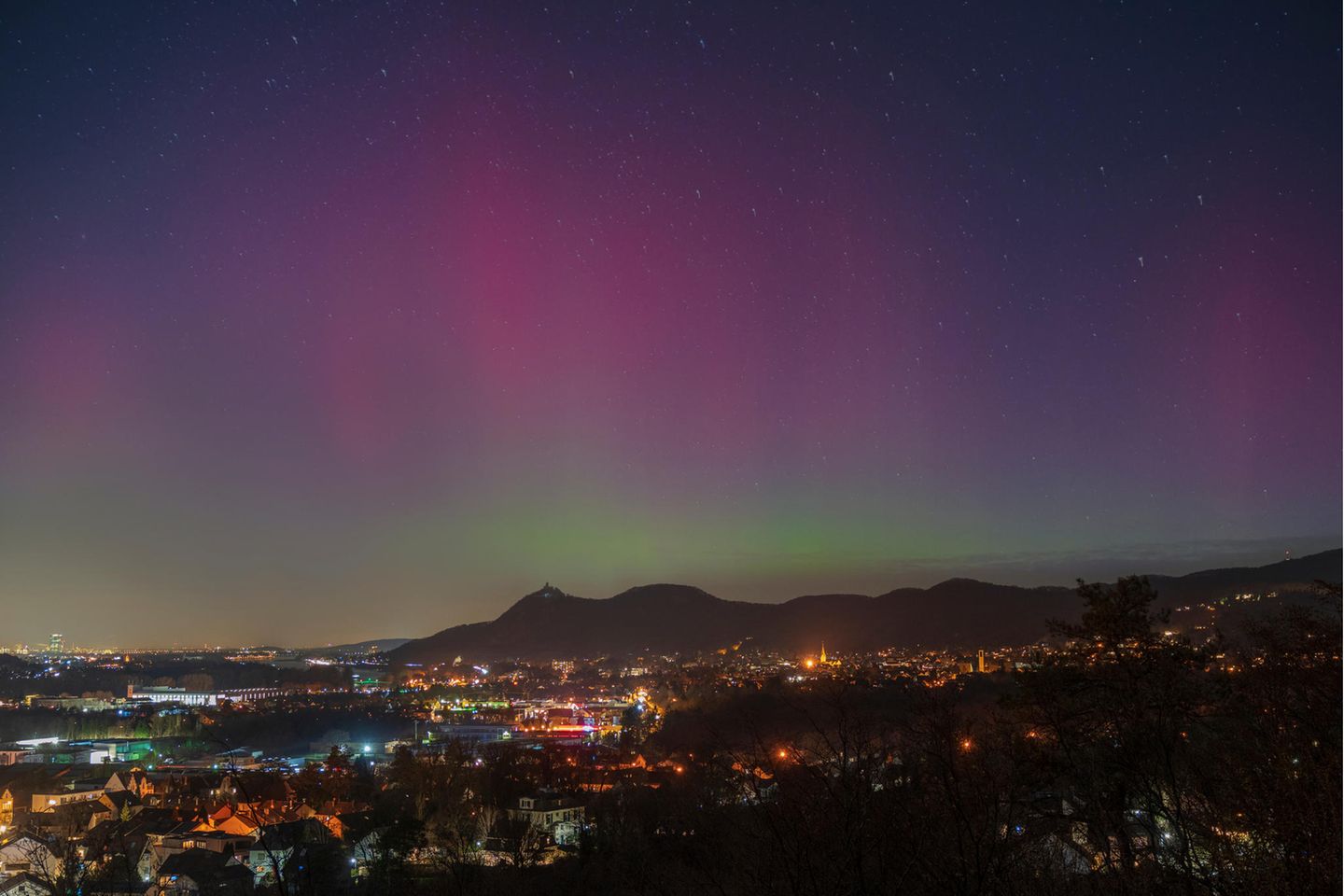Aurora Borealis
How can we see the pink northern lights over Germany?
© Adrian72 / Adobe Stock
The probability of seeing the Northern Lights in Germany is extremely small. But recently some have been spotted here again and again. What are the chances in the coming days?
Northern lights sightings possible in the coming nights and weeks
Basically, it is difficult to predict when the next northern lights will appear in the night sky. But as Dirk Schlesier, the director of the planetarium in Halle, explains to MDR, There is definitely a chance of being able to observe the natural phenomenon in the coming nights: “Solar activity remains quite high, so there is a possibility of northern light sightings in the next few days and weeks.”
According to the German Research Center for Geosciences (GFZ), northern lights mostly occur in the far north between 60th and 70th parallel. For geographical classification: Oslo, for example, is below the 60th parallel, the Norwegian city of Tromsö just below the 70th. But the stronger the solar storms, the more likely visibility is in the southern latitudes.
Why are we currently seeing northern lights in this country?
Back in April, a spokesman for the Institute for Solar-Terrestrial Physics at the German Aerospace Center (DLR) announced that the current increase in sightings was not entirely unusual. Approximately every eleven years, in a so-called solar cycle, there are phases with weak and strong solar activity. We are currently approaching a maximum that we could reach next year. The following applies to the northern lights: The higher the solar activity, the greater the probability for sightings also in southern latitudes.
Since solar activity is currently very high, as shown by the Kp index, which describes the disruption of the earth’s magnetic field by the solar wind, geomagnetic storms are increasingly occurring, triggering the light spectacle in the sky. High-energy solar wind particles are thrown into space at high speeds by eruptions on the sun’s surface. When these meet the earth’s magnetic field, the beautiful northern lights are created.
The Aurora Borealis could already be seen over Germany, Austria and Slovenia on November 5th. At around 6 p.m. the impressive celestial spectacle was visible over large regions of central Germany. Including over southern Bavaria.
When and where can you observe the northern lights?
spring and autumn are statistically the best times of year to discover the Northern Lights in Germany. The opportunities are greater in the north than in the south. In addition, you can only see the northern lights if the sky is clear and dark and you are looking north. Rural regions and the great outdoors are better places for observation compared to lighted cities.
Sources: mdr.de, wetteronline.de, gfz-potsdam.de
